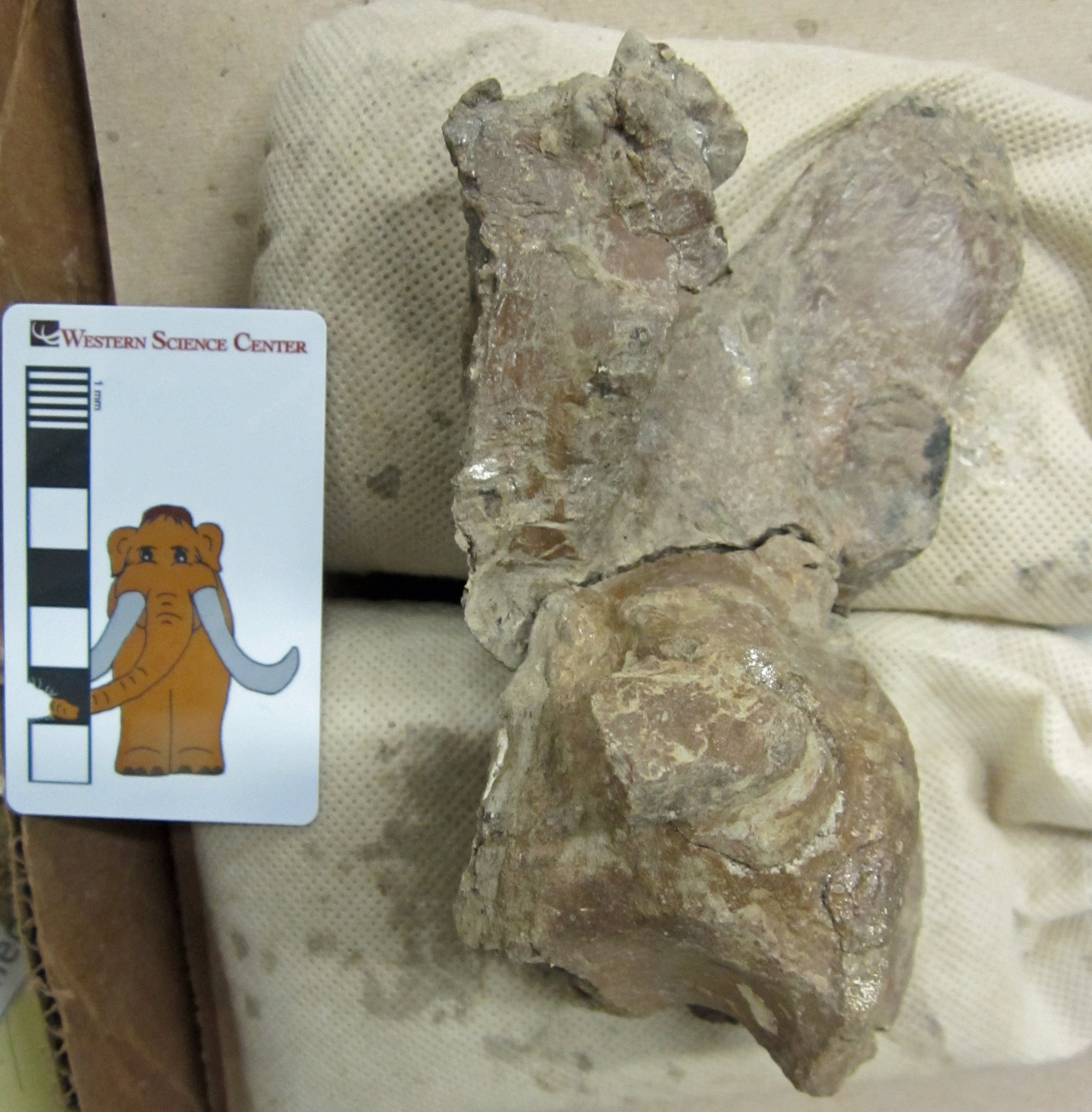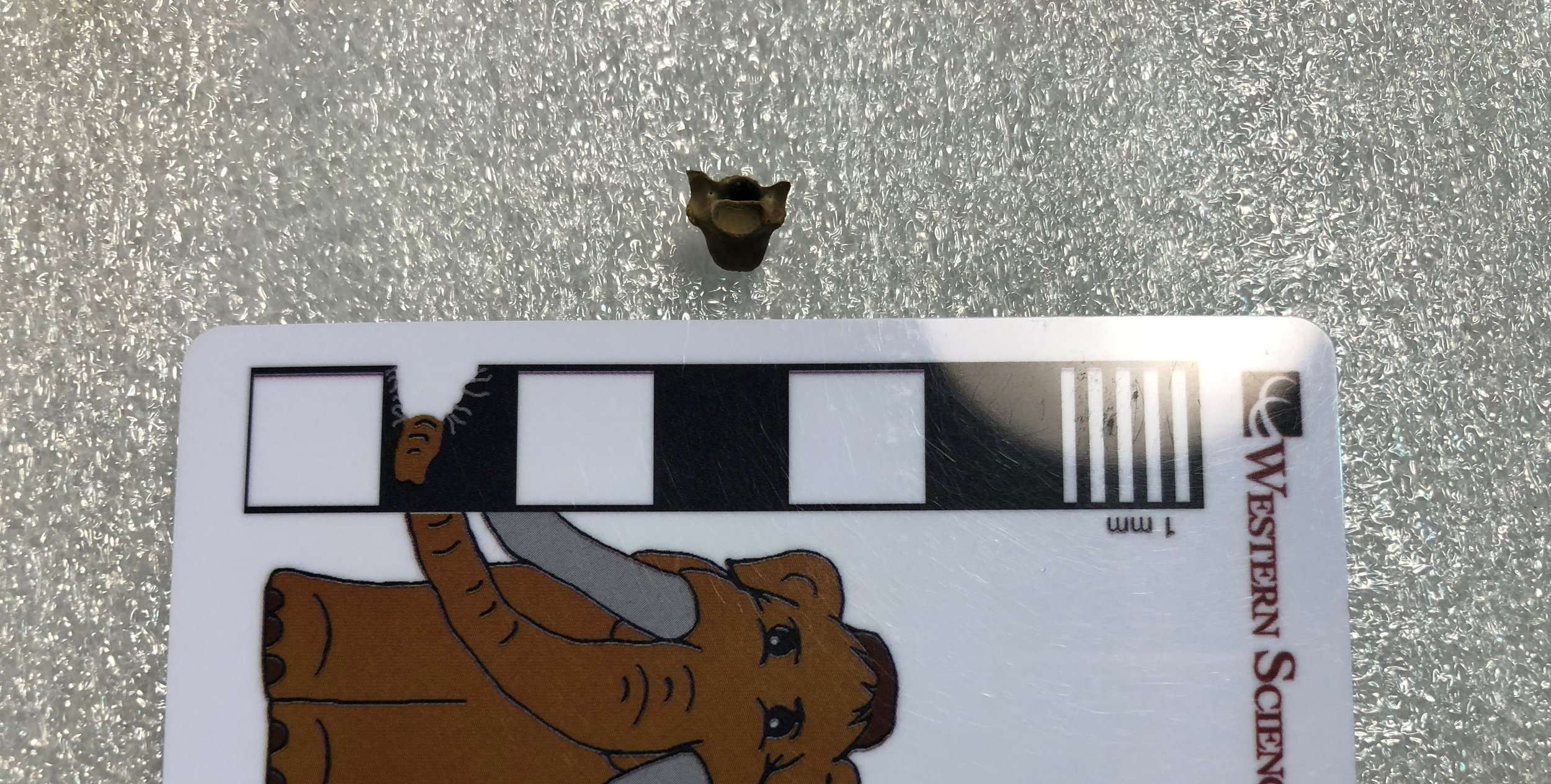 On January 25, I showed you a horned dinosaur vertebra that was still partially encased in its plaster field jacket. Western Science Center volunteer John Deleon has been working hard on this vertebra for the last several weeks and has made great progress. The vertebra is now completely freed from its jacket, and is awaiting a bit more matrix removal and gluing before it is finished.This vertebra is part of a partial ceratopsian skeleton excavated in New Mexico in 2018 by the Western Science Center, Zuni Dinosaur Institute for Geosciences, and Southwest Paleontological Society. At between 80 and 79 million years old, this skeleton is among the oldest specimens of large horned dinosaurs from North America. We are not yet certain what kind of horned dinosaur this is, but there are numerous more bones from the same animal waiting to be prepared in the WSC lab.Post by Curator Dr. Andrew McDonald.
On January 25, I showed you a horned dinosaur vertebra that was still partially encased in its plaster field jacket. Western Science Center volunteer John Deleon has been working hard on this vertebra for the last several weeks and has made great progress. The vertebra is now completely freed from its jacket, and is awaiting a bit more matrix removal and gluing before it is finished.This vertebra is part of a partial ceratopsian skeleton excavated in New Mexico in 2018 by the Western Science Center, Zuni Dinosaur Institute for Geosciences, and Southwest Paleontological Society. At between 80 and 79 million years old, this skeleton is among the oldest specimens of large horned dinosaurs from North America. We are not yet certain what kind of horned dinosaur this is, but there are numerous more bones from the same animal waiting to be prepared in the WSC lab.Post by Curator Dr. Andrew McDonald.
Fossil Friday - Snake Vertebra
 In the opinion of this naturalist, snakes are among the most elegant animals ever to have evolved. The fossil record of extinct snakes was poorly known for a long time. However, recent discoveries have revealed that a diverse array of early snakes lived alongside the dinosaurs, as far back in time as the Middle Jurassic Epoch, over 165 million years ago. The earliest known snake is Eophis underwoodi, from the Middle Jurassic of England: http://www.nature.com/articles/ncomms6996Today's Fossil Friday subject is a fossil snake in the Western Science Center's collection. This is a vertebra of Coniophis precedens, a snake that lived during the Late Cretaceous Epoch, about 67 million years ago, alongside much bigger reptiles such as Tyrannosaurus and Triceratops. This specimen was collected by the late Harley Garbani in the Hell Creek Formation of Montana, and donated to the museum by his wife, Mary.
In the opinion of this naturalist, snakes are among the most elegant animals ever to have evolved. The fossil record of extinct snakes was poorly known for a long time. However, recent discoveries have revealed that a diverse array of early snakes lived alongside the dinosaurs, as far back in time as the Middle Jurassic Epoch, over 165 million years ago. The earliest known snake is Eophis underwoodi, from the Middle Jurassic of England: http://www.nature.com/articles/ncomms6996Today's Fossil Friday subject is a fossil snake in the Western Science Center's collection. This is a vertebra of Coniophis precedens, a snake that lived during the Late Cretaceous Epoch, about 67 million years ago, alongside much bigger reptiles such as Tyrannosaurus and Triceratops. This specimen was collected by the late Harley Garbani in the Hell Creek Formation of Montana, and donated to the museum by his wife, Mary.
These early snakes were not venomous, but instead killed their prey by constriction like living pythons and boas. Another Late Cretaceous snake, Sanajeh indicus from India, seems to have habitually preyed upon hatchling long-necked sauropod dinosaurs. Three skeletons of this snake have been discovered associated with fossils of sauropod nests, eggs, and hatchlings: http://journals.plos.org/plosbiology/article?id=10.1371/journal.pbio.1000322
Post by Curator Dr. Andrew McDonald

